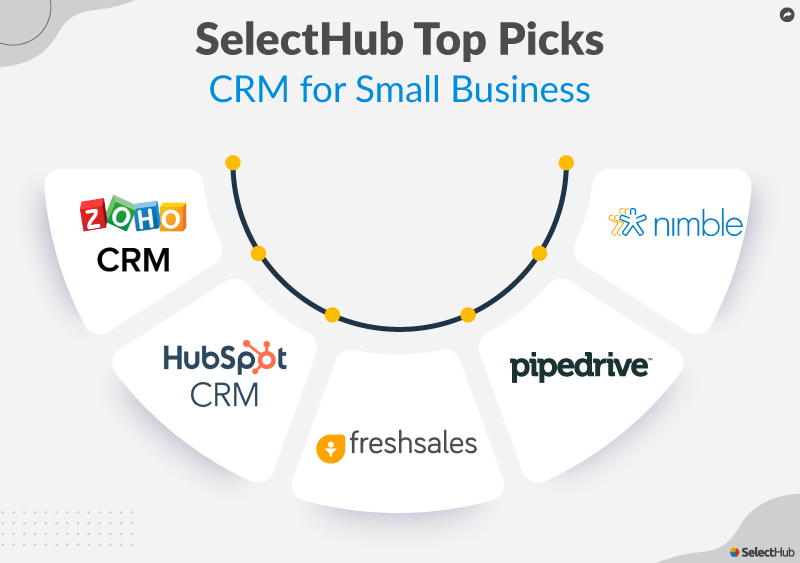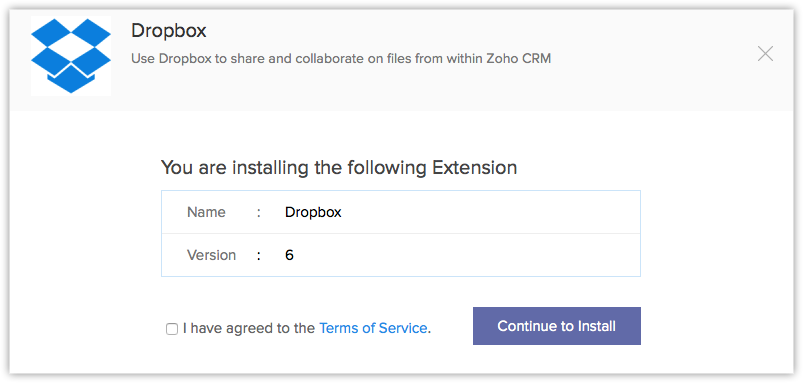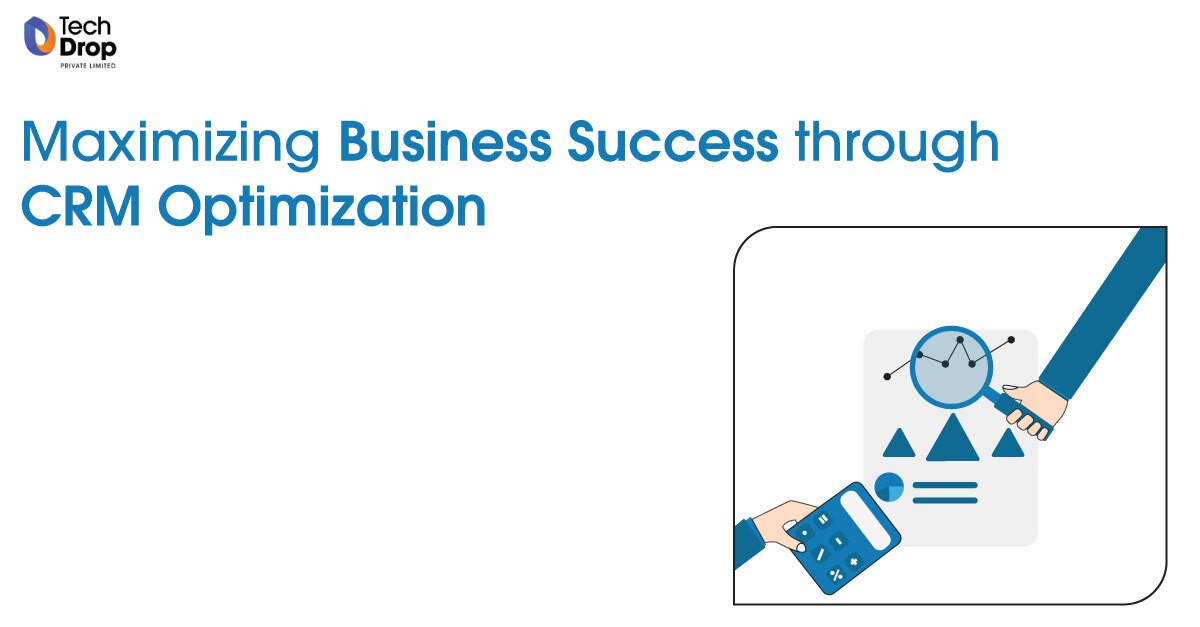Unlocking Growth: A Deep Dive into CRM Marketing Analytics
Introduction: The Power of Data-Driven Marketing with CRM
In today’s fast-paced digital landscape, businesses are constantly seeking a competitive edge. One of the most powerful tools in their arsenal is Customer Relationship Management (CRM) marketing analytics. It’s no longer enough to simply guess what your customers want; you need data. You need insights. You need a way to understand their behaviors, preferences, and needs. CRM marketing analytics provides exactly that – a comprehensive understanding of your customers, enabling you to make informed decisions and drive significant business growth.
This in-depth exploration will unravel the intricacies of CRM marketing analytics. We’ll delve into what it is, why it’s crucial, the various metrics you should be tracking, the tools available, and, most importantly, how to leverage these insights to transform your marketing strategies and achieve remarkable results. Get ready to embark on a journey that will empower you to harness the full potential of your customer data.
What is CRM Marketing Analytics?
At its core, CRM marketing analytics is the process of collecting, analyzing, and interpreting customer data within your CRM system to improve marketing performance. It’s about turning raw data into actionable insights. Think of your CRM as a goldmine of information. It holds details about your customers – their demographics, purchase history, interactions with your brand, and much more. CRM marketing analytics helps you extract the valuable nuggets of information from this mine.
This involves using various analytical techniques and tools to:
- Identify customer segments
- Understand customer behavior
- Measure marketing campaign effectiveness
- Optimize marketing spend
- Personalize customer experiences
- Predict future customer behavior
The ultimate goal is to make data-driven decisions that lead to increased customer satisfaction, higher conversion rates, and improved return on investment (ROI) for your marketing efforts.
Why is CRM Marketing Analytics Important? The Benefits Explained
The benefits of implementing CRM marketing analytics are numerous and far-reaching. In a world where customer expectations are constantly evolving, and competition is fierce, understanding your customers is no longer a luxury; it’s a necessity. Here are some key advantages:
1. Improved Customer Understanding
CRM marketing analytics provides a 360-degree view of your customers. You gain a deeper understanding of their needs, preferences, and pain points. This allows you to create more targeted and relevant marketing messages, ultimately leading to higher engagement and conversion rates. By understanding your customers better, you can tailor your products and services to meet their specific needs, resulting in increased customer satisfaction and loyalty.
2. Enhanced Marketing Campaign Performance
By analyzing data from your CRM, you can identify which marketing campaigns are performing well and which ones are not. This allows you to optimize your campaigns in real-time, making adjustments to improve their effectiveness. You can also identify the most effective channels for reaching your target audience and allocate your marketing budget accordingly. This leads to a higher ROI and more efficient use of your marketing resources.
3. Increased Sales and Revenue
CRM marketing analytics helps you identify and nurture leads, personalize sales interactions, and close deals more effectively. By understanding your customers’ buying behavior, you can predict their future purchases and proactively offer them relevant products or services. This leads to increased sales and revenue, ultimately boosting your bottom line. Furthermore, by identifying potential churn risks, you can proactively reach out to at-risk customers and implement strategies to retain them.
4. Improved Customer Retention
Customer retention is crucial for long-term business success. CRM marketing analytics helps you identify customers who are at risk of churning and allows you to take proactive steps to retain them. By understanding why customers are leaving, you can address their concerns and implement strategies to improve their satisfaction. Happy customers are more likely to stay loyal to your brand, leading to increased customer lifetime value.
5. Data-Driven Decision Making
Instead of relying on guesswork, CRM marketing analytics empowers you to make data-driven decisions. You can base your marketing strategies on concrete evidence, rather than intuition. This reduces the risk of making costly mistakes and increases the likelihood of achieving your marketing goals. Data-driven decision-making leads to more efficient resource allocation, improved campaign performance, and ultimately, better business outcomes.
Key Metrics to Track in CRM Marketing Analytics
To effectively leverage CRM marketing analytics, you need to track the right metrics. These metrics provide valuable insights into your marketing performance and customer behavior. Here are some of the most important metrics to monitor:
1. Customer Acquisition Cost (CAC)
CAC measures the cost of acquiring a new customer. It’s calculated by dividing the total marketing and sales expenses by the number of new customers acquired. Tracking CAC helps you understand the efficiency of your customer acquisition efforts. You can then analyze the CAC for different marketing channels or campaigns to determine which ones are most cost-effective. Lowering your CAC is crucial for profitability.
2. Customer Lifetime Value (CLTV)
CLTV estimates the total revenue a customer will generate throughout their relationship with your business. It’s a crucial metric for understanding the long-term value of your customers. By analyzing CLTV, you can identify your most valuable customers and focus your efforts on retaining them. CLTV also helps you determine how much you can afford to spend on customer acquisition and retention efforts. A higher CLTV indicates a more profitable customer base.
3. Conversion Rate
Conversion rate measures the percentage of leads who convert into customers. It’s a key indicator of your marketing campaign effectiveness. Tracking your conversion rate across different channels and campaigns allows you to identify areas for improvement. By optimizing your landing pages, marketing messages, and sales processes, you can increase your conversion rate and generate more revenue. Higher conversion rates directly impact your bottom line.
4. Customer Churn Rate
Customer churn rate measures the percentage of customers who stop doing business with you over a specific period. It’s a critical metric for understanding customer retention. By analyzing your churn rate, you can identify the reasons why customers are leaving and implement strategies to prevent churn. Reducing your churn rate is essential for maintaining a stable customer base and ensuring long-term business success. Lower churn leads to higher profitability.
5. Return on Investment (ROI)
ROI measures the profitability of your marketing campaigns. It’s calculated by dividing the net profit from a campaign by the cost of the campaign. Tracking ROI allows you to assess the effectiveness of your marketing investments. By analyzing ROI across different campaigns and channels, you can determine which ones are generating the highest returns and allocate your budget accordingly. A positive ROI indicates that your marketing efforts are profitable.
6. Website Traffic & Engagement
Monitoring website traffic (visits, unique visitors) and engagement metrics (bounce rate, time on site, pages per session) provides insights into how users interact with your online presence. Analyze these metrics to understand which content resonates with your audience and how to improve user experience. High engagement often correlates with better conversion rates.
7. Lead Generation Metrics
Track the number of leads generated, lead source, and lead qualification rate. This helps you evaluate the effectiveness of your lead generation efforts and identify the most successful channels for attracting potential customers. Segment your leads based on their behavior and demographics to personalize your marketing efforts.
8. Email Marketing Metrics
Analyze open rates, click-through rates (CTR), and conversion rates for your email campaigns. These metrics help you understand how your audience interacts with your emails and identify areas for improvement. Optimize your subject lines, content, and calls-to-action to increase engagement and drive conversions.
Tools and Technologies for CRM Marketing Analytics
Several tools and technologies are available to help you implement CRM marketing analytics. The right choice depends on your specific needs and budget. Here are some popular options:
1. CRM Software
Your CRM software is the foundation of your marketing analytics. Popular options include:
- Salesforce: A comprehensive CRM platform with robust analytics capabilities.
- HubSpot: A user-friendly CRM with integrated marketing automation and analytics tools.
- Zoho CRM: An affordable CRM with a wide range of features, including analytics.
- Microsoft Dynamics 365: An integrated CRM and ERP platform with powerful analytics.
These platforms provide built-in analytics dashboards and reporting features. They also allow you to integrate with other tools and platforms for more advanced analytics.
2. Business Intelligence (BI) Tools
BI tools allow you to analyze data from multiple sources, including your CRM, marketing automation platform, and website analytics. Some popular BI tools include:
- Tableau: A powerful data visualization tool for creating interactive dashboards.
- Power BI: A Microsoft BI platform with a user-friendly interface and advanced analytics capabilities.
- Looker: A data analytics platform with a focus on data governance and collaboration.
BI tools enable you to create custom reports and dashboards that provide deeper insights into your marketing performance.
3. Marketing Automation Platforms
Marketing automation platforms automate repetitive marketing tasks and provide valuable analytics. Popular options include:
- Marketo: A robust marketing automation platform with advanced analytics capabilities.
- Pardot: A Salesforce marketing automation platform.
- ActiveCampaign: A user-friendly marketing automation platform with integrated CRM features.
These platforms track customer behavior and provide insights into the effectiveness of your marketing campaigns.
4. Data Visualization Tools
Data visualization tools help you present your data in a clear and concise manner. They allow you to create charts, graphs, and dashboards that are easy to understand. Some popular data visualization tools include:
- Google Data Studio: A free data visualization tool that integrates with various data sources.
- Tableau Public: A free version of Tableau for creating and sharing data visualizations.
5. Website Analytics Tools
These tools track website traffic and user behavior. They provide valuable insights into how users interact with your website. Popular options include:
- Google Analytics: A free and widely used website analytics tool.
- Adobe Analytics: A comprehensive website analytics platform with advanced features.
How to Implement CRM Marketing Analytics: A Step-by-Step Guide
Implementing CRM marketing analytics can seem daunting, but it doesn’t have to be. Here’s a step-by-step guide to help you get started:
1. Define Your Goals and Objectives
Before you start collecting and analyzing data, it’s crucial to define your goals and objectives. What do you want to achieve with CRM marketing analytics? Are you looking to increase sales, improve customer retention, or optimize your marketing spend? Clearly defined goals will guide your data analysis and help you measure your success.
2. Identify Your Key Performance Indicators (KPIs)
Once you’ve defined your goals, identify the KPIs that will help you measure your progress. Choose KPIs that are relevant to your goals and that you can track consistently. Some examples of KPIs include customer acquisition cost, customer lifetime value, conversion rate, and churn rate. Selecting the appropriate KPIs is critical to understanding your performance.
3. Clean and Organize Your Data
Data quality is essential for accurate analysis. Ensure that your data is clean, accurate, and organized. This may involve removing duplicate records, correcting errors, and standardizing data formats. A clean dataset will lead to more reliable insights. Consider data governance policies to maintain data integrity.
4. Choose the Right Tools
Select the CRM software, BI tools, and marketing automation platforms that best meet your needs and budget. Consider factors such as features, ease of use, and integration capabilities. Ensure the chosen tools align with your technical expertise and business requirements. Evaluate different options before making a final decision.
5. Collect and Analyze Your Data
Collect data from your CRM, marketing automation platform, website analytics, and other relevant sources. Use your chosen tools to analyze the data and identify trends, patterns, and insights. This involves creating reports, dashboards, and visualizations that help you understand your marketing performance. Employ statistical methods to extract meaningful insights from the data.
6. Interpret Your Findings
Don’t just collect and analyze data; interpret your findings. What do the data tell you about your customers, your campaigns, and your overall marketing performance? Draw conclusions and identify areas for improvement. Consider the ‘why’ behind the data. Understanding the context is essential for effective decision-making.
7. Take Action and Implement Changes
Based on your findings, take action and implement changes to your marketing strategies. This may involve optimizing your campaigns, personalizing customer experiences, or adjusting your marketing spend. Act on the insights you gain from data analysis. Make data-driven decisions to improve your marketing performance.
8. Monitor and Refine
CRM marketing analytics is an ongoing process. Continuously monitor your KPIs, track your progress, and refine your strategies as needed. Regularly review your data and adapt your approach based on the latest insights. Stay agile and responsive to changes in customer behavior and market trends. Continuous monitoring ensures you are always optimizing your marketing efforts.
Leveraging CRM Marketing Analytics: Strategies for Success
Implementing CRM marketing analytics is just the first step. To truly succeed, you need to leverage the insights you gain to transform your marketing strategies. Here are some strategies for success:
1. Customer Segmentation
Segment your customers based on their demographics, behavior, and purchase history. This allows you to create more targeted and personalized marketing messages. Tailor your messaging to resonate with specific customer groups. Understanding different customer segments is crucial for effective targeting. Use your CRM data to create customer segments.
2. Personalized Marketing
Use customer data to personalize your marketing messages, offers, and website content. Personalization increases engagement and conversion rates. Tailor your communications to each customer’s individual needs and preferences. Leverage CRM data to personalize email campaigns, website experiences, and more.
3. Lead Scoring and Nurturing
Implement a lead scoring system to identify and prioritize qualified leads. Nurture leads with targeted content and offers to move them through the sales funnel. Use marketing automation to nurture leads based on their behavior and engagement. Lead scoring and nurturing improves sales efficiency.
4. A/B Testing
Conduct A/B tests to optimize your marketing campaigns. Test different headlines, calls-to-action, and landing pages to see what performs best. Use A/B testing to continuously improve your marketing efforts. Test different elements of your marketing materials.
5. Marketing Automation
Use marketing automation to streamline your marketing processes and personalize customer experiences. Automate repetitive tasks such as email marketing, social media posting, and lead nurturing. Marketing automation saves time and improves efficiency. Automate your marketing workflows based on customer behavior.
6. Predictive Analytics
Use predictive analytics to forecast customer behavior and identify future trends. Predict customer churn, anticipate future purchases, and personalize recommendations. Predictive analytics helps you stay ahead of the curve. Leverage historical data to predict future outcomes.
7. Cross-Channel Marketing
Integrate your marketing efforts across multiple channels, such as email, social media, and website. Provide a consistent customer experience across all channels. Cross-channel marketing improves customer engagement. Coordinate your marketing efforts across different platforms.
8. Continuous Improvement
Constantly monitor your results, analyze your data, and refine your strategies. CRM marketing analytics is an iterative process. Continuously seek ways to improve your marketing performance. Learn from your successes and failures. Embrace a culture of continuous improvement.
Common Challenges and How to Overcome Them
While CRM marketing analytics offers tremendous potential, businesses often encounter challenges. Here’s how to overcome them:
1. Data Quality Issues
Challenge: Inaccurate, incomplete, or inconsistent data can undermine your analysis.
Solution: Implement data quality checks, data cleansing processes, and data governance policies. Ensure your data is accurate, complete, and consistent.
2. Lack of Integration
Challenge: Data silos across different systems can hinder your ability to gain a complete view of your customers.
Solution: Integrate your CRM with other marketing tools and platforms. Utilize APIs to connect different systems.
3. Limited Resources
Challenge: Lack of skilled personnel or budget constraints can limit your ability to implement and maintain CRM marketing analytics.
Solution: Invest in training, consider outsourcing some tasks, or start with a smaller-scale implementation. Prioritize the most impactful initiatives.
4. Difficulty in Interpreting Data
Challenge: Analyzing complex data can be challenging without the right expertise.
Solution: Invest in training, hire data analysts, or use user-friendly BI tools. Focus on clear data visualization.
5. Resistance to Change
Challenge: Employees may resist adopting data-driven decision-making.
Solution: Communicate the benefits of CRM marketing analytics, provide training, and foster a data-driven culture. Demonstrate the value of data-driven insights.
Conclusion: The Future of Marketing is Data-Driven
CRM marketing analytics is no longer a nice-to-have; it’s a must-have for businesses that want to thrive in today’s competitive landscape. By harnessing the power of customer data, you can gain a deeper understanding of your customers, optimize your marketing campaigns, and drive significant business growth. The future of marketing is data-driven, and those who embrace CRM marketing analytics will be best positioned for success.
Start your journey today. Implement the strategies and tools discussed in this guide. Embrace the power of data and unlock the full potential of your marketing efforts. The rewards of data-driven marketing are substantial, and the time to act is now.




